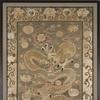Rare Antebellum Image of Slavery Sells for $324,500 in Cowan’s November American History Auction
- CINCINNATI, Ohio
- /
- November 20, 2019
The quarter plate daguerreotype is believed to be the earliest known image of enslaved African Americans with cotton.
CINCINNATI – An incredibly rare antebellum quarter plate daguerreotype believed to be the earliest known image of enslaved African Americans with cotton sold for $324,500 in Cowan’s American History auction on November 15. The photograph, likely taken sometime in the 1850s, depicts an upland Greene County, Georgia plantation owner, his family, and 10 enslaved African Americans.
“We were privileged to sell this historic record of antebellum American history,” said Wes Cowan, Cowan’s vice chair and principal auctioneer. “Clearly, this was one of the most important daguerreotypes we’ve ever sold and as an auction house that regularly sells important historical photography, I don’t say that lightly.”
The daguerreotype was purchased by the Hall Family Foundation on behalf of the Nelson-Atkins Museum of Art in Kansas City, Missouri. The lot opened with an absentee bid at the starting price of $50,000 before a representative of the Nelson-Atkins Museum and two other phone bidders took over the action. After several minutes of back-and-forth bidding, the foundation emerged as the winning bidder when the hammer fell at $260,000. The inclusion of a 25% buyer’s premium resulted in a final sales price of $324,500. The photograph had been estimated to sell for $100,000 to $150,000.
“This daguerreotype makes a major contribution to the larger story of both American history and American photography, and is a significant addition to our daguerreotype holdings, an emphasis, dating back to 1995, in which we take considerable pride,” said Keith F. Davis, the senior curator of photography at the Nelson-Atkins Museum.
The daguerreotype is believed to depict the rural Greene County, Georgia plantation of Samuel T. Gentry (1798-1873). While other Gentrys lived in Georgia at the time this image was taken, Federal Slave Schedules from 1850 and 1860 indicate a mere handful were slave holders, and only one -- Samuel T. Gentry -- owned at least 10 slaves, the number depicted in this daguerreotype.
The vast majority of known images of enslaved African Americans come from images taken by photographers who accompanied the Union Army in Coastal Georgia and the Carolinas. In these plantations, hundreds of slaves were owned by a small class of planter elites, providing their families with access to luxuries only dreamed of by the vast majority of Georgians. While this is the vision most Americans have of the antebellum south, the Gentry daguerreotype depicts a different reality.
Samuel Gentry was no mere yeoman farmer, but neither was he a member of the upper stratum of the planter class. Between 1850 and 1860, he owned between 15 and 18 slaves, which would have been slightly more than the average Georgia slaveowner at the time. Most plantations worked by slaves at the time looked more like Gentry’s humble homestead than the large coastal plantations most often depicted in history, making this a rare look at the pervasiveness of slavery.
It is probable that Gentry commissioned this photograph to document his prosperity. The photographer carefully posed the scene so that the family “wealth” is clearly on display: ten enslaved African Americans are visible in the picture, with several displaying baskets of cotton perched atop their heads. Cotton – the production of which was made possible by Gentry’s slaves – is an integral part of the tableau.
“We are incredibly honored to have acquired this piece. We appreciate that it depicts a scene from a difficult time in American history and is important to many different communities,” added Jane Aspinall, curator of photography at the Nelson-Atkins Museum. “We feel fortunate that this previously unknown image will now become a part of our collective knowledge base, and will be preserved alongside our other treasured holdings of early photography.”
The Gentry daguerreotype was the top lot of Cowan’s $1.1 million American History auction Auction held on November 15 in Cowan’s Cincinnati salesroom. There was significant interest across a spectrum of categories, most notably early photography of Native Americans, which saw four lots top $30,000. More details about the auction can be found on cowans.com.
About Cowan’s
A full-service auction house, Cowan’s Auctions is a leader in the industry, having disrupted the marketplace since its founding in 1995. From its Cincinnati and Cleveland salesrooms, Cowan’s holds over 60 auctions a year in the categories of historic firearms and militaria, American Indian art, American history, Americana, folk art, fine art, furniture, Asian art, coins and currency, rare books, fine jewelry and more. In 2019, Cowan’s merged with Leslie Hindman Auctioneers to form Hindman Auctions, the largest auction company in the midwestern United States. In addition to Cincinnati and Cleveland, Hindman has offices in Atlanta, Chicago, Denver, Milwaukee, Naples, Palm Beach, Scottsdale and St. Louis. For more information, visit www.cowans.com.
Contact:
Eric DuncanCowan's Auctions
513-871-1670
eric@cowans.com


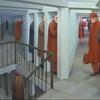


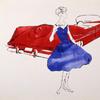
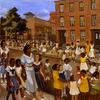

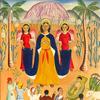

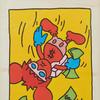


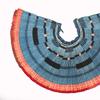
100x100_c.jpg)
